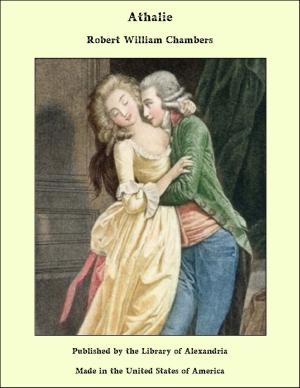| Author: | Sir Roger L'Estrange | ISBN: | 9781465517838 |
| Publisher: | Library of Alexandria | Publication: | March 8, 2015 |
| Imprint: | Language: | English |
| Author: | Sir Roger L'Estrange |
| ISBN: | 9781465517838 |
| Publisher: | Library of Alexandria |
| Publication: | March 8, 2015 |
| Imprint: | |
| Language: | English |
Sheridan attained his greatest renown through his writing and lecturing on elocution, and the fervor with which he pursued the study of tones, looks, and gestures in speaking animates A Discourse Delivered in the Theatre at Oxford, in the Senate-House at Cambridge, and at Spring-Garden in London. This lecture, "Being Introductory to His Course of Lectures on Elocution and the English Language," displays both the man and the elocutionary movement. Throughout the work, Sheridan exhibits his missionary zeal, his dedication to "a visionary hypothesis that dazzled his mind."[2] At the same time, he presents the basic principles of elocutionary theory and reveals the forces that made the movement a dominant pattern in English rhetoric. To some degree Sheridan's dedication to language study is evidenced in his theatrical activities. As an undergraduate, he wrote a play that was later published; and almost immediately after taking his M.A. at Trinity College, he made his professional acting debut in Dublin. This was 1743, and forty years later he was taking part in Attic Entertainments, performances "consisting of recitation, singing, and music."[4] A selective chronology suggests his involvement with the stage: 1744, acting in London with Garrick; 1750, acting and managing in Dublin; 1760, acting in London; 1780, acting manager for his son at Drury Lane. Successful as an actor, Sheridan appears to have missed greatness because he could not overcome an inflexibility and obstinacy in personality; and the same characteristics helped to precipitate a number of squabbles and riots that marred his managerial efforts. However, much of his frustration in the theatre must be attributed to the more compelling attraction to the theory of delivery in speaking. The stage provided a practical outlet, but Sheridan's fascination with elocutionary theory dominated and deflected the interest in theatre. That elocution was his primary concern is demonstrated in his major publications: British Education, 1756; Lectures on Elocution, 1762; A Plan of Education, 1769; Lectures on the Art of Reading, 1775; and A General Dictionary of the English Language, 1780. In all of these works the central argument remained unchanged after its initial statement in the complete title of British Education.[5] There, Sheridan suggested that a revival of the art of speaking would improve religion, morality, and constitutional government; would undergird a refining of the language; and would pave the way for ultimate perfection in all the arts
Sheridan attained his greatest renown through his writing and lecturing on elocution, and the fervor with which he pursued the study of tones, looks, and gestures in speaking animates A Discourse Delivered in the Theatre at Oxford, in the Senate-House at Cambridge, and at Spring-Garden in London. This lecture, "Being Introductory to His Course of Lectures on Elocution and the English Language," displays both the man and the elocutionary movement. Throughout the work, Sheridan exhibits his missionary zeal, his dedication to "a visionary hypothesis that dazzled his mind."[2] At the same time, he presents the basic principles of elocutionary theory and reveals the forces that made the movement a dominant pattern in English rhetoric. To some degree Sheridan's dedication to language study is evidenced in his theatrical activities. As an undergraduate, he wrote a play that was later published; and almost immediately after taking his M.A. at Trinity College, he made his professional acting debut in Dublin. This was 1743, and forty years later he was taking part in Attic Entertainments, performances "consisting of recitation, singing, and music."[4] A selective chronology suggests his involvement with the stage: 1744, acting in London with Garrick; 1750, acting and managing in Dublin; 1760, acting in London; 1780, acting manager for his son at Drury Lane. Successful as an actor, Sheridan appears to have missed greatness because he could not overcome an inflexibility and obstinacy in personality; and the same characteristics helped to precipitate a number of squabbles and riots that marred his managerial efforts. However, much of his frustration in the theatre must be attributed to the more compelling attraction to the theory of delivery in speaking. The stage provided a practical outlet, but Sheridan's fascination with elocutionary theory dominated and deflected the interest in theatre. That elocution was his primary concern is demonstrated in his major publications: British Education, 1756; Lectures on Elocution, 1762; A Plan of Education, 1769; Lectures on the Art of Reading, 1775; and A General Dictionary of the English Language, 1780. In all of these works the central argument remained unchanged after its initial statement in the complete title of British Education.[5] There, Sheridan suggested that a revival of the art of speaking would improve religion, morality, and constitutional government; would undergird a refining of the language; and would pave the way for ultimate perfection in all the arts















